The world of optometry is dramatically changing, especially with the rise of online retailers providing direct-to-consumer eyewear.
In fact, online sales in the optical industry have soared 100% since 2011 alone, and nearly one in three customers said that they’ll likely purchase eyewear online in the future.
For practitioners, that means finding new ways to grow their practice and create value for their patients. Luckily, technology is helping to provide powerful new tools that are compelling for patients while also giving optometry professionals an edge over online retailers.
The Rise of Eye-Tracking Tech
While relatively new, eye-tracking technologies are an exciting advancement that’s captured headlines in the gaming world as well as in virtual-reality applications and augmented reality advertising experiences.
But these capabilities have important clinical applications as well. Here are just five ways to leverage these new advancements to grow your practice.
1. Functional vision screening
While vision screening is a standard offering for every optometrist, that practice can be enhanced by helping patients uncover vision issues. With eye strain related to computer and device use at an all-time high, optometrists need ways to accurately measure visual performance on digital devices.
In addition to corrective and preventative care, practitioners can suggest computer-based exercises that patients can do at home to improve dynamic acuity over time. And beyond just correction through glasses or lenses, providers can offer ergonomics evaluations or testing and treatment for conditions like dry eye that are particularly prevalent among those who use devices heavily.
2. Reading assessments
Kids in school are too often misdiagnosed with learning disabilities when, in reality, they’re having trouble reading and doing schoolwork because of vision issues. It’s not only frustrating for parents but demoralizing for kids.
Eye-tracking technology can help practitioners provide specific non-invasive reading assessments in the office that can reassure parents with clear, actionable reporting and results. And perhaps most importantly, the right assessment and diagnosis can help students get the vision correction they really need to succeed in school.
3. Sports vision assessment
Athletes of all disciplines depend on vision for performance, whether it’s judging the speed and height of a pitched baseball or evaluating the grade of a ski slope.
Offering specific sports vision assessment services using eye-tracking technology can not only differentiate your practice but provide a service to new clientele who may not need or want traditional vision care but who are absolutely interested in any edge they can give themselves on the court or on the field. Bringing your practice to the table as part of an athlete’s overall health, wellness, and performance can be a sharp differentiator in the market.
4. Brain Health
Alongside sports performance comes sports injury, and for athletes in contact sports like football and soccer, the incidence of concussion can be as high as 19% per season.
Optometrists have a critical role to play in post-concussion care, especially by evaluating the impact and severity of the concussion and helping the patient recover through neuro-optometric rehabilitation. Eye-tracking can be used to assess eye movements and eye teaming. Professionals can use these metrics to offer a number of treatment options – from supportive temporary prescriptions to computer-based strengthening exercises and therapy – to improve specific areas of dysfunction.
5. Aging Eye Care
In America, the population of adults who are 85 and older is the fastest-growing age group. And with aging comes complicated ocular and cognitive changes that can dramatically affect visual performance and negatively impact patients’ quality of life.
Optometry professionals have a significant opportunity to leverage eye-tracking technology to help support their vision care programs. By identifying and providing treatment services to help preserve and improve optical health in elderly patients, practitioners can be a trusted, reassuring resource for their families as well and a critical part of their care team.
The Time to Start is Now
Investing in new technology can feel daunting, but it doesn’t have to be. New eye-tracking offerings are cost-effective, but also offer optometry practices new ways to serve the community, treat patients they wouldn’t normally see, and help an increasingly digital generation manage their optical health more proactively.
By considering these new advancements, you can not only understand and embrace how optometry is evolving today but stay ahead of where it will be tomorrow so you can keep your practice ahead of the curve.






 Bethesda, Maryland, USA
Bethesda, Maryland, USA